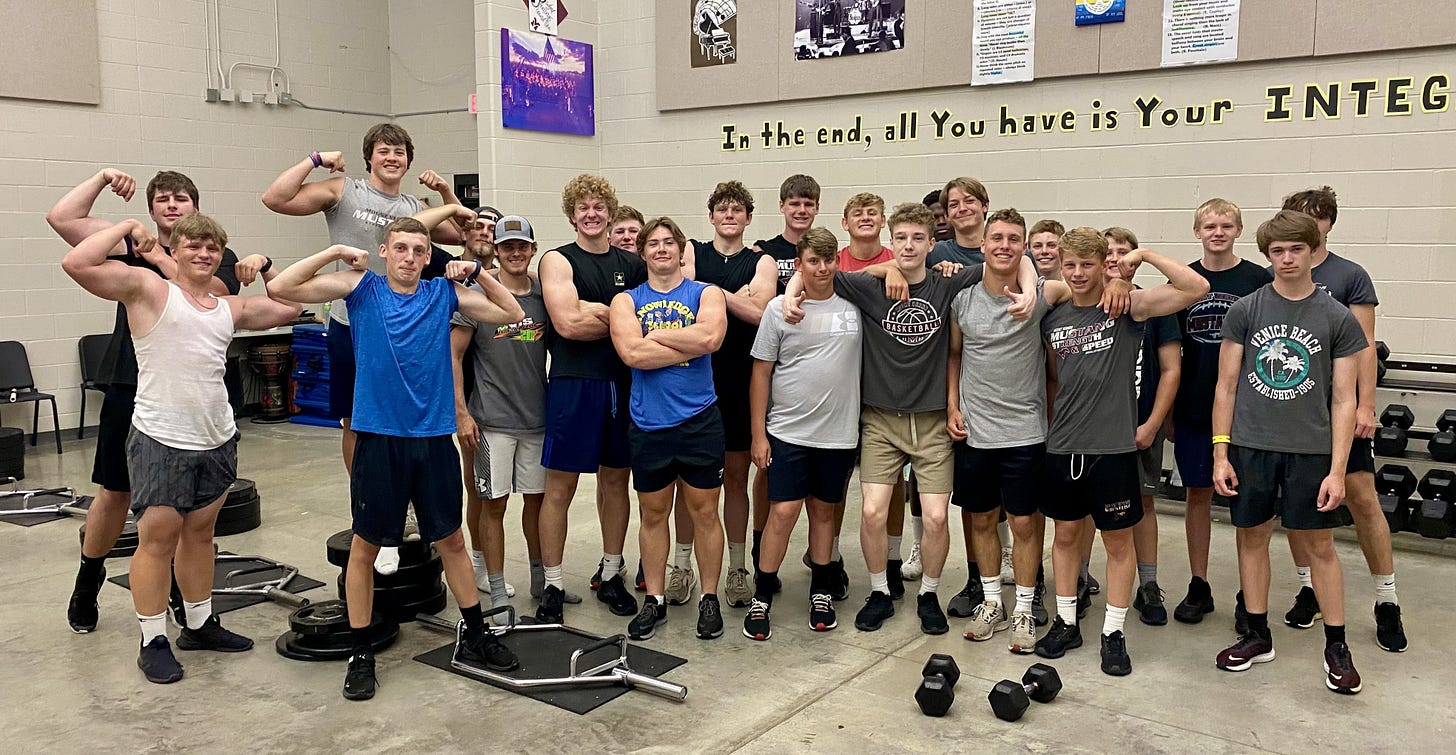More Than a Metric: How VBT Builds a Culture of Intent, Ownership & Competitive Fire
#56 - Strength & Speed Coaching - Pursuing Your Best ⚡️
Velocity-Based Training (VBT) does more than regulate weight on the bar.
It changes how kids move.
It changes how they feel about training.
And when used well—it can change the entire culture of your room.
This week, we’re shifting from devices and logistics to what really matters: how VBT helps build a competitive, self-driven, high-intent environment that student-athletes want to be part of.
Let’s get into it.
It’s Not About the Number—It’s About the Response
Bar speed is feedback.
But what matters most is what that feedback creates.
With VBT, athletes no longer go through the motions. They feel the difference between explosive and sluggish. They see their performance in real time. And they learn how to respond—not just complete a set.
That feedback loop builds more than physical progress. It builds:
Awareness of how effort changes output
Ownership over training choices
Consistency in movement intent
It also builds something hard to coach: competitive drive that doesn’t rely on a coach yelling.
Culture Builders in Our Room
Here’s what that looks like on the ground:
Competitions
We’ve kept it simple.
Fastest rep at your rack? It gets noticed.
It doesn’t need to be fancy to work. Athletes just need to know it matters.
PR Opportunities
The best part of VBT is when a kid hits a new high and you hear the rack next to them say, “Let’s go.”
It’s not about the weight—it’s about the win.
When velocity becomes the goal, more kids get to celebrate success.
Peer Coaching
“Hey, you’re under. Take five pounds off and go for it.”
You start hearing that without having to say it yourself.
Athletes begin cueing each other, checking bar speeds, encouraging adjustments.
It becomes their room—not just your program.
Real Stories, Real Impact
We’ve seen athletes who used to coast through sets finally realize what intent really feels like.
We’ve seen quiet groups start competing for fastest rep on hang cleans—and it changed the energy in the room.
We’ve seen athletes self-regulate more intelligently. They know when to stop, when to push, and how to adjust without asking a me or Coach Whitman.
These aren’t just training wins. They’re identity shifts.
That’s what VBT can build when culture is the goal.
What Culture Looks Like When It’s Working
It’s not chaotic.
It’s not tech-heavy.
It’s not overhyped.
It’s focused.
Here’s what we’ve seen when VBT is fully integrated into class:
Every rep matters. The feedback makes it real. (Just like sprints & jumps.)
Coaching sharpens. You have a second set of “eyes” helping you.
Athletes engage. Because they’re in control of the adjustment loop.
Training becomes honest. No more reps just to finish a set. Athletes shut it down when intent drops.
The best part?
You don’t need elite-level gear to make it happen. You just need clear intent and a system that fits your setting.
Start Small. Build Big.
Start with one lift.
One zone.
One standard for what intent feels like.
Then layer in competitive touches. Highlight intent. Reinforce speed.
The encoder doesn’t build the culture—you do.
But used right, VBT makes it a whole lot easier.
Final Thoughts
VBT isn’t just a training tool. It’s a culture builder.
It shows athletes that training with intent matters.
That how they move matters.
That they can adjust, compete, and own their development.
You’ll start seeing better reps. But more importantly—you’ll start seeing more engaged athletes.
And that’s the game-changer.
Next Series: Warm Ups
Until then—keep pursuing excellence.
— Preston ⚡️
P.S. If this series helped you rethink your Strength & Speed approach, tap the like button and share it with another coach.
Each share helps Pursuit PE reach more people—and keeps ideas moving forward.
🔒 Paid Subscriber Benefit
Thanks for supporting Pursuit PE. You’re not just here for ideas—you’re here for support that moves the needle.
This Week’s Benefit:
🎥 Ask Me Anything & Get a Personal Video Response
Have a question about your own setup? Need input on how to build VBT into your classroom? Want a second opinion on programming or class flow?
Send your question my way—and I’ll reply with a personalized video breaking it down. Think of it like a mini consulting session, built specifically for your situation, your program, and your athletes.
Please see details below…
Not a paid subscriber yet?
Upgrade to unlock this benefit, future resources, and exclusive downloads.






